Everything about Spiders
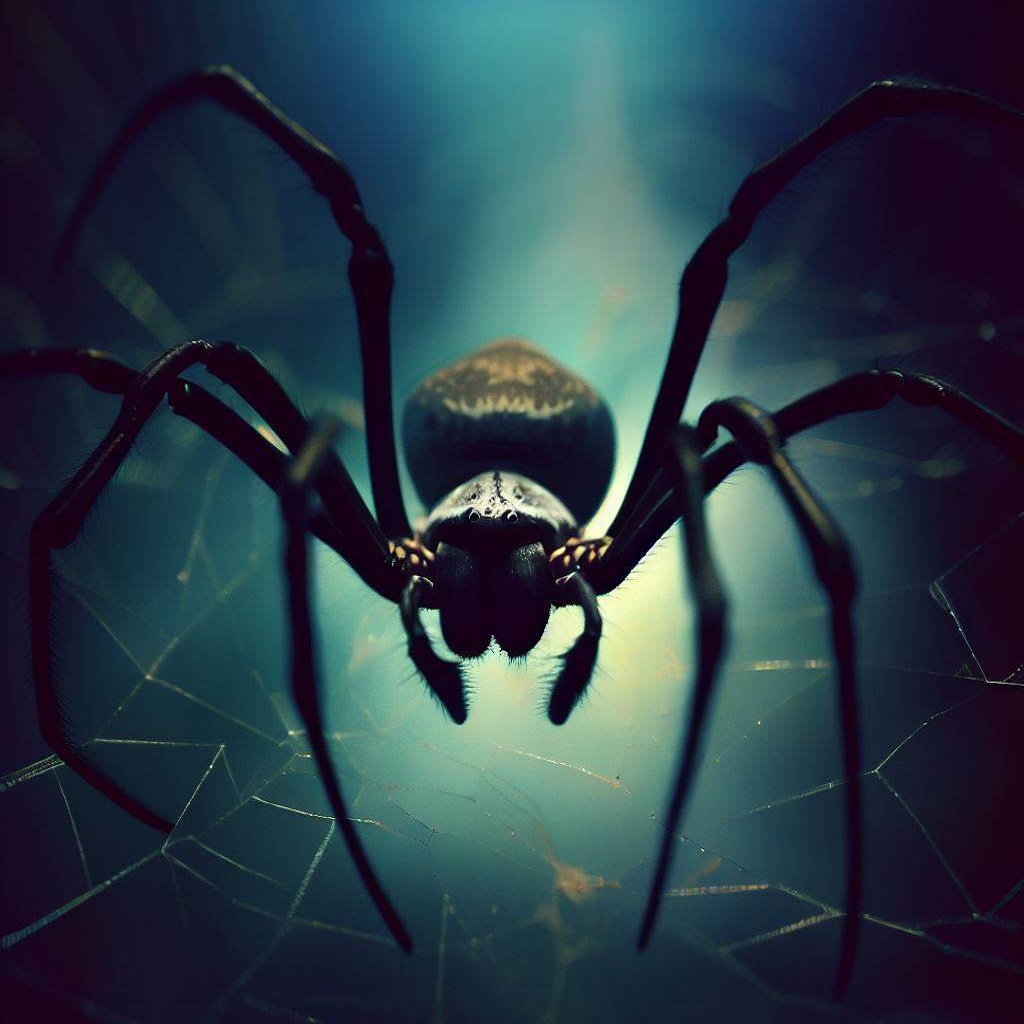
| Everything About Spiders | |
|---|---|
| Feature | Description |
| Types | Orb-weaver spiders, Jumping spiders, Wolf spiders, Tarantulas, Funnel web spiders, etc. |
| Size | Vary from tiny (less than 0.5 mm) to very large (up to 90 mm in leg span for some tarantulas). |
| Common Habitats | Varies widely. Found in gardens, forests, grasslands, homes, caves, deserts, and various other environments. |
| Diet | Primarily insects and other smaller spiders. They use venom to paralyze or kill their prey. |
| Behavior | Most are solitary, relying on webs, speed, or stealth to capture prey. Some are known for their unique mating dances or other behaviors. |
Dissecting Spiders Anatomy
Spiders are fascinating arthropods belonging to the class Arachnida. They are best known for their eight legs and their ability to spin intricate webs. Here’s an overview of spider anatomy:
Body
Head Region of Cephalothorax
Thoracic Region of Cephalothorax
Internal Anatomy
Reproductive System
Body
- Cephalothorax (Prosoma): This is the front part of the spider’s body, where the head and thorax are fused together. It’s covered on top by a shield-like structure called the carapace.
- Abdomen (Opisthosoma): This is the rear part of the spider’s body, which contains most of the internal organs. It’s more flexible than the cephalothorax.
Head Region of Cephalothorax
- Eyes: Most spiders have eight eyes, but this number can vary. The arrangement and size of these eyes can differ significantly among species.
- Chelicerae: These are the jaws of the spider, ending in fangs. They’re used to grasp prey and deliver venom.
- Pedipalps: These are leg-like appendages near the mouth. In males, the tips of pedipalps are modified for transferring sperm to females.
Thoracic Region of Cephalothorax
- Legs: Spiders have four pairs of legs. Each leg is segmented and typically has claws at the end.
- Spinnerets: Located at the rear of the abdomen, these are small, finger-like projections used to produce silk. Spiders have multiple silk glands, each producing a different type of silk (e.g., sticky silk for capturing prey or stronger silk for framework threads).
Internal Anatomy
- Digestive System: Spiders have a simple gut that extends from the mouth to the rear of the abdomen. They liquefy their food externally using digestive juices and then suck it up.
- Circulatory System: Spiders have an open circulatory system with a simple heart and hemolymph (instead of blood) that bathes the internal organs.
- Respiratory System: Spiders typically breathe using book lungs, though some also have tracheae (tubular air channels). The number and location of book lungs can vary among species.
- Silk Glands: Located in the abdomen, these glands produce silk that’s expelled as a liquid but solidifies when drawn into threads.
Reproductive System
- Epigyne: In many female spiders, this is a hardened plate on the underside of the abdomen that contains the openings to the reproductive system. It’s often used for species identification.
- Spermathecae: These are internal structures in females where sperm is stored after mating.
- Modified Pedipalps: In male spiders, the ends of the pedipalps are modified into structures used to transfer sperm to the female.
How Do I Get Rid Of Spiders?
Getting rid of spiders involves a combination of reducing their food sources, eliminating hiding spots, and using targeted treatments.
If the spider presence is minimal, a DIY approach may be effective. Simple measures like regularly cleaning and decluttering can deter spiders. Also, sealing gaps in windows, doors, and walls prevents them from entering your home.
However, if the spider problem is persistent or if there are concerns about venomous species, it’s often wiser to consult professionals.
Choosing between a DIY method and hiring pest control professionals for spider control is influenced by the severity of the issue, budget constraints, and the desired outcome.
What are the most common types of Spiders
in Canada?
Canada hosts a variety of spider species due to its diverse habitats. Here’s a list of some of the most common spiders found in Canada:
- Cross Orb-weaver (Araneus diadematus)
- Barn Funnel Weaver (Tegenaria domestica)
- Common House Spider (Parasteatoda tepidariorum)
- Grass Spiders (Agelenopsis SPP.)
- Wolf Spiders (Lycosidae family)
- Jumping Spiders (Salticidae family)
- Fishing Spiders (Dolomedes SPP.)
- Sac Spiders (Clubionidae, Miturgidae, or Corinnidae families)
- Crab Spiders (Thomisidae family)
- Black and Yellow Garden Spider (Argiope aurantia)
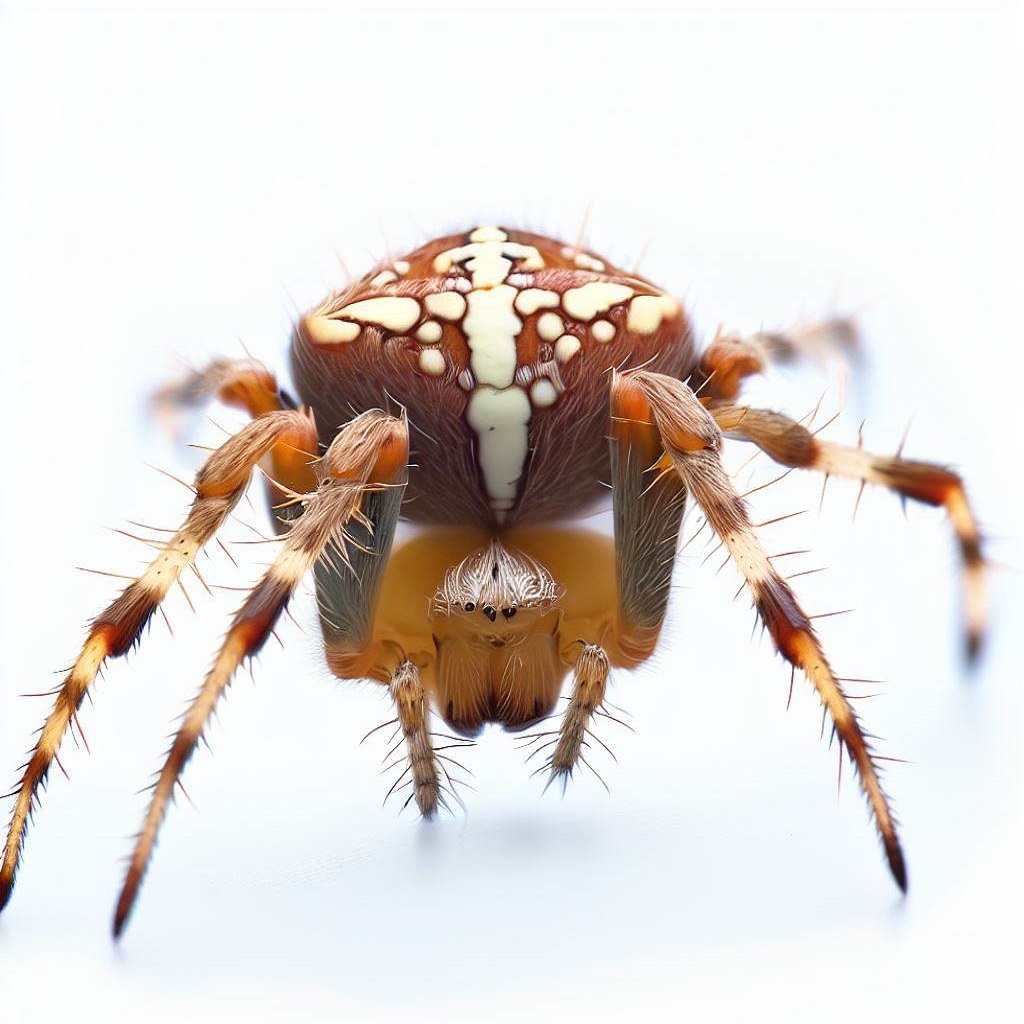
Cross Orb-weaver
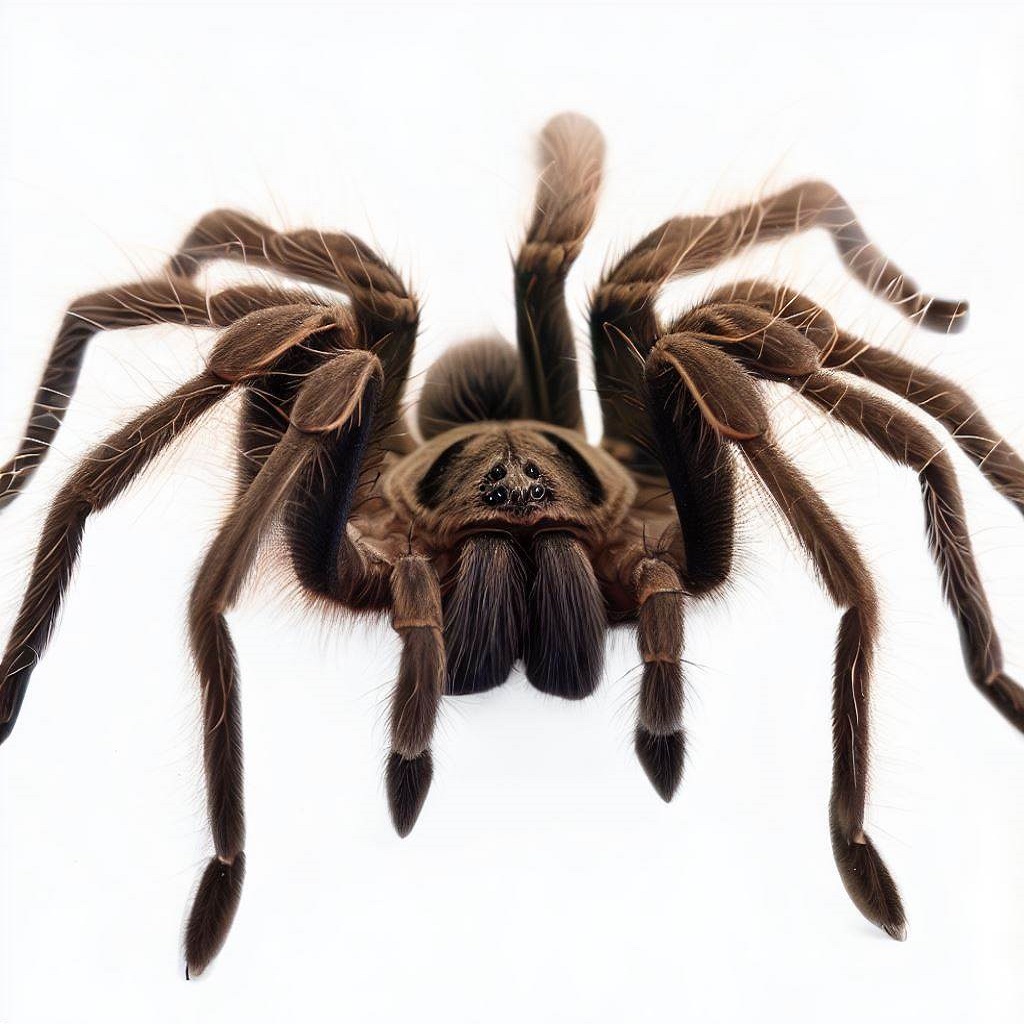
Barn Funnel Weaver
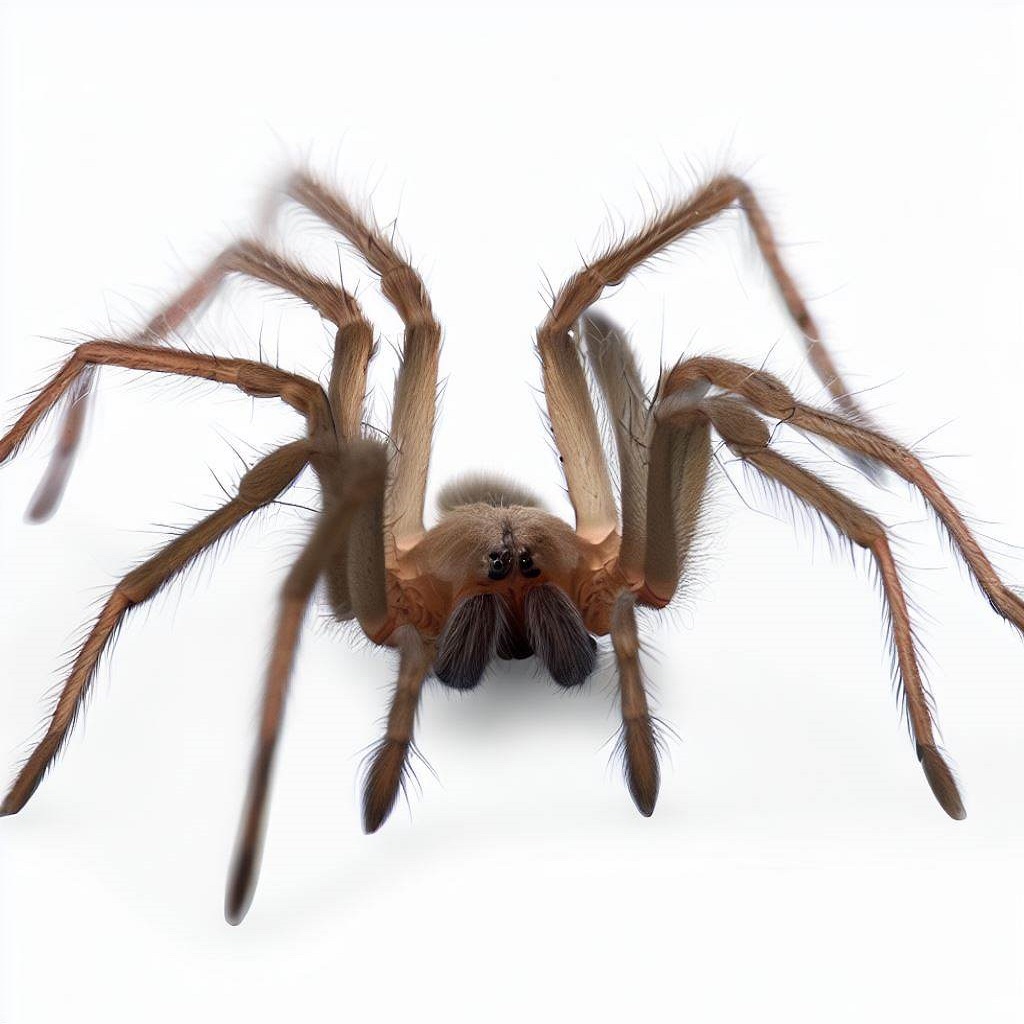
Common House Spider
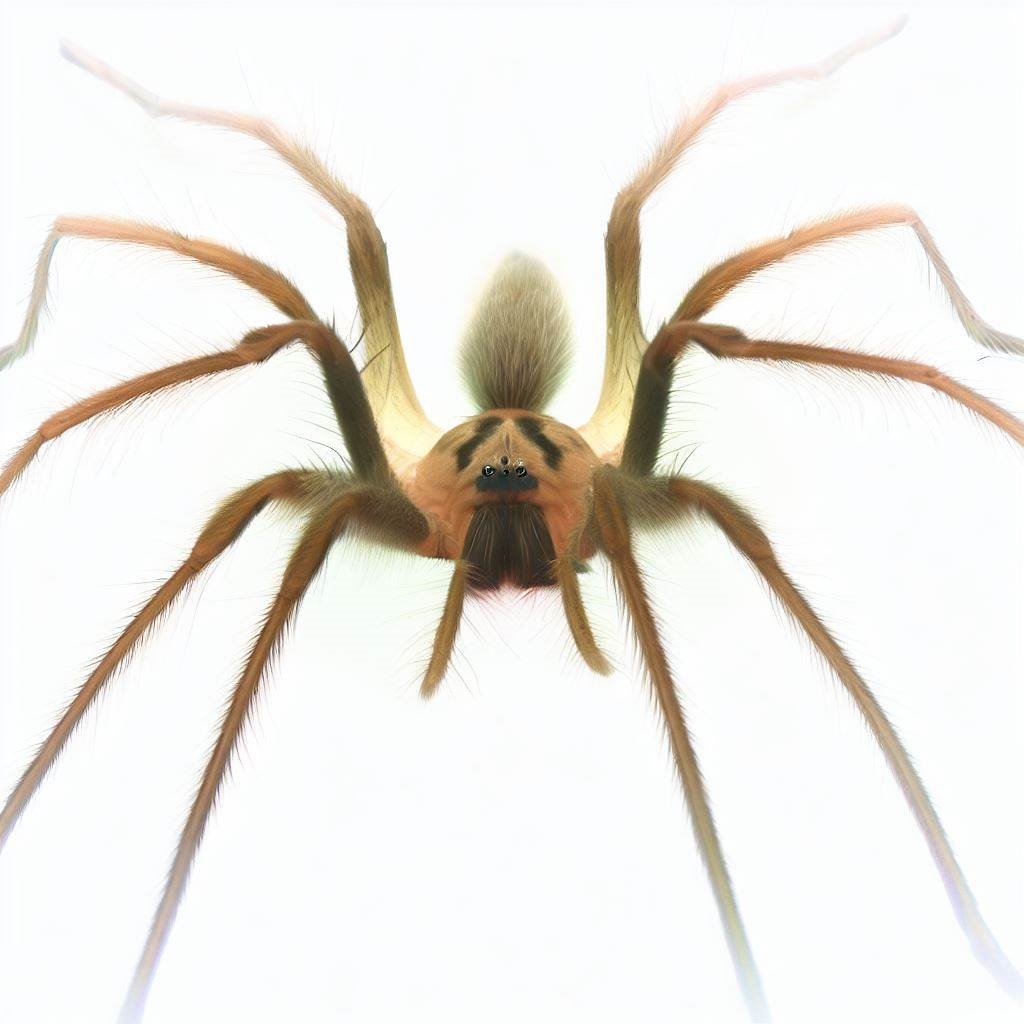
Grass Spiders
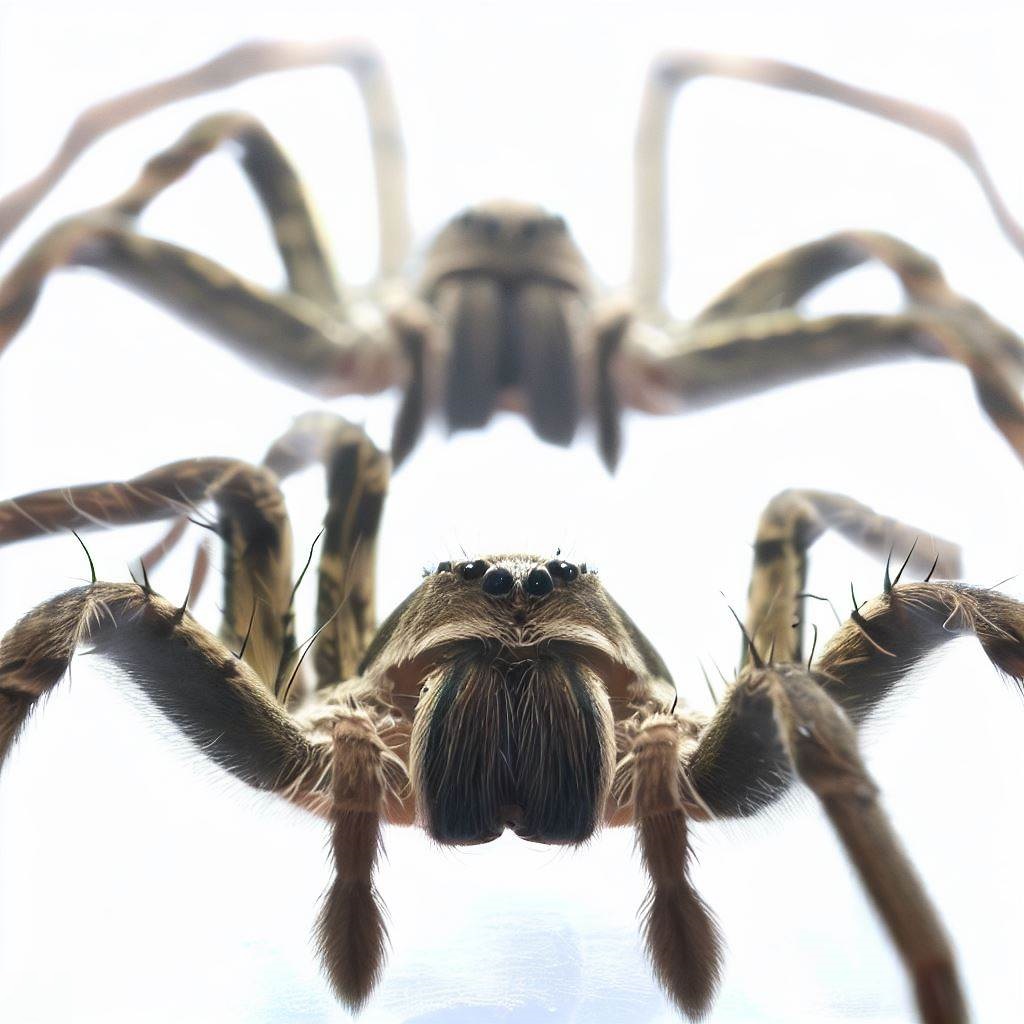
Wolf Spiders
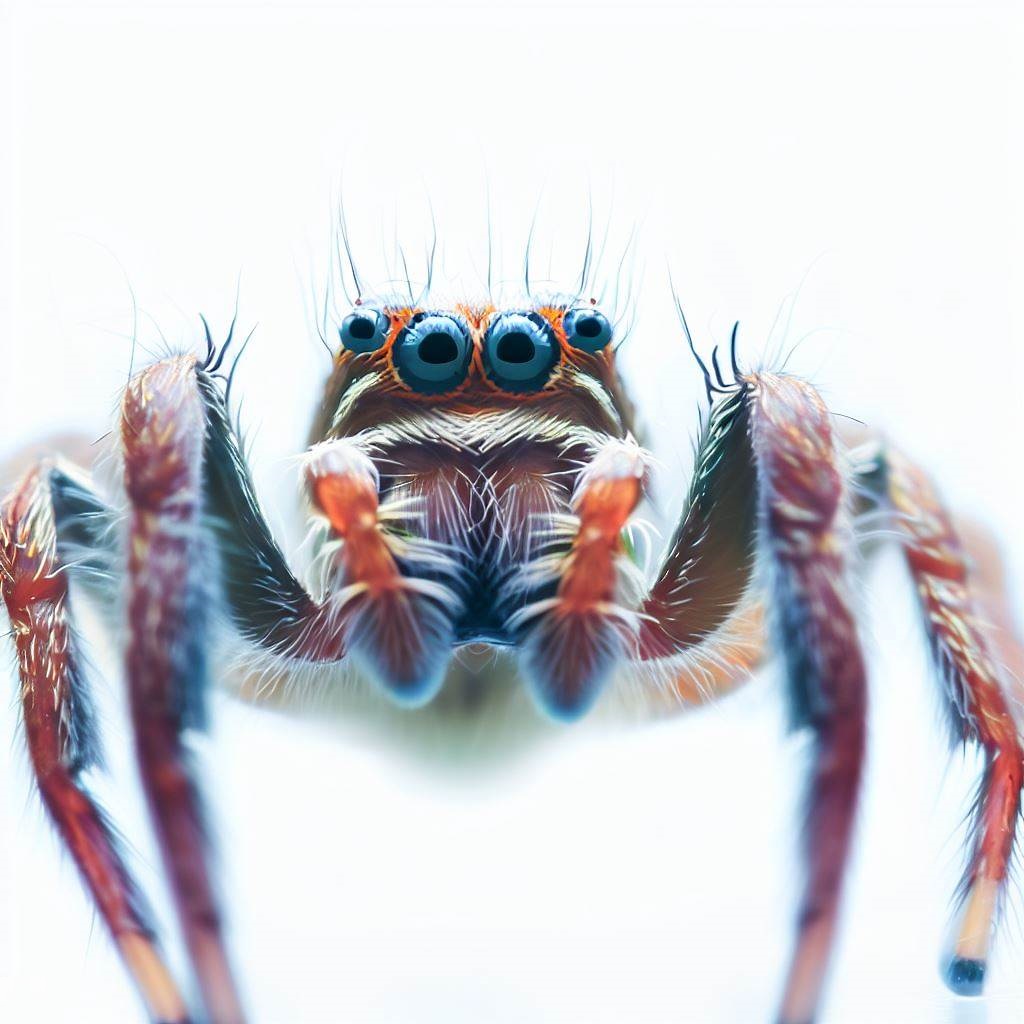
Jumping Spiders
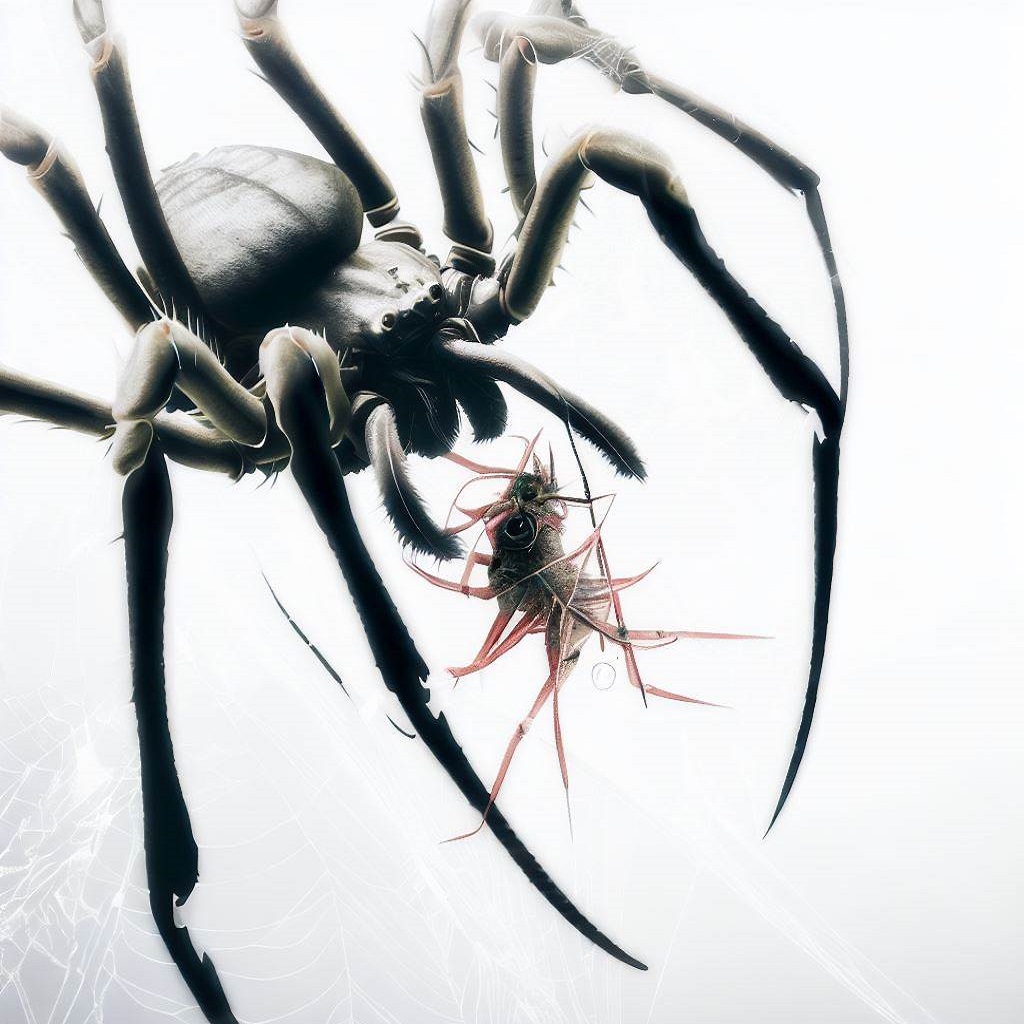
Fishing Spiders
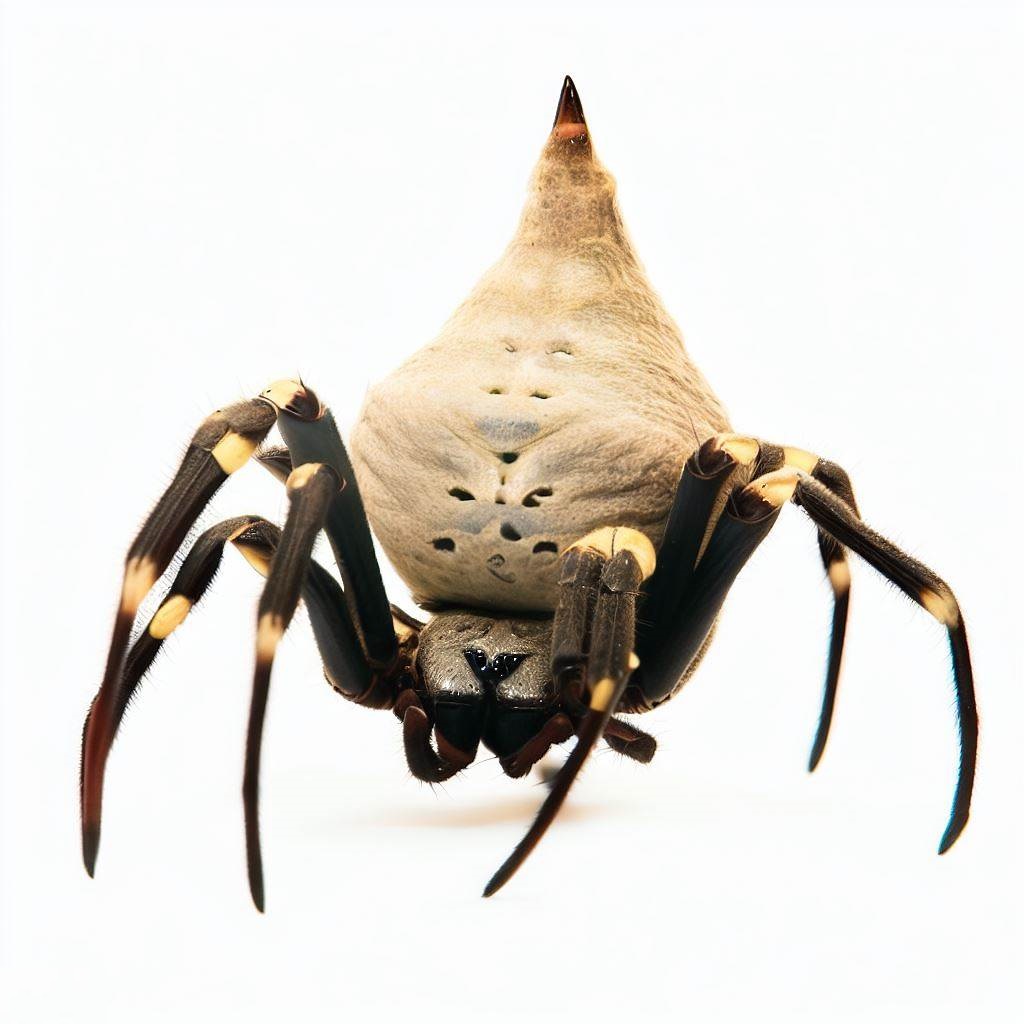
Sac Spiders
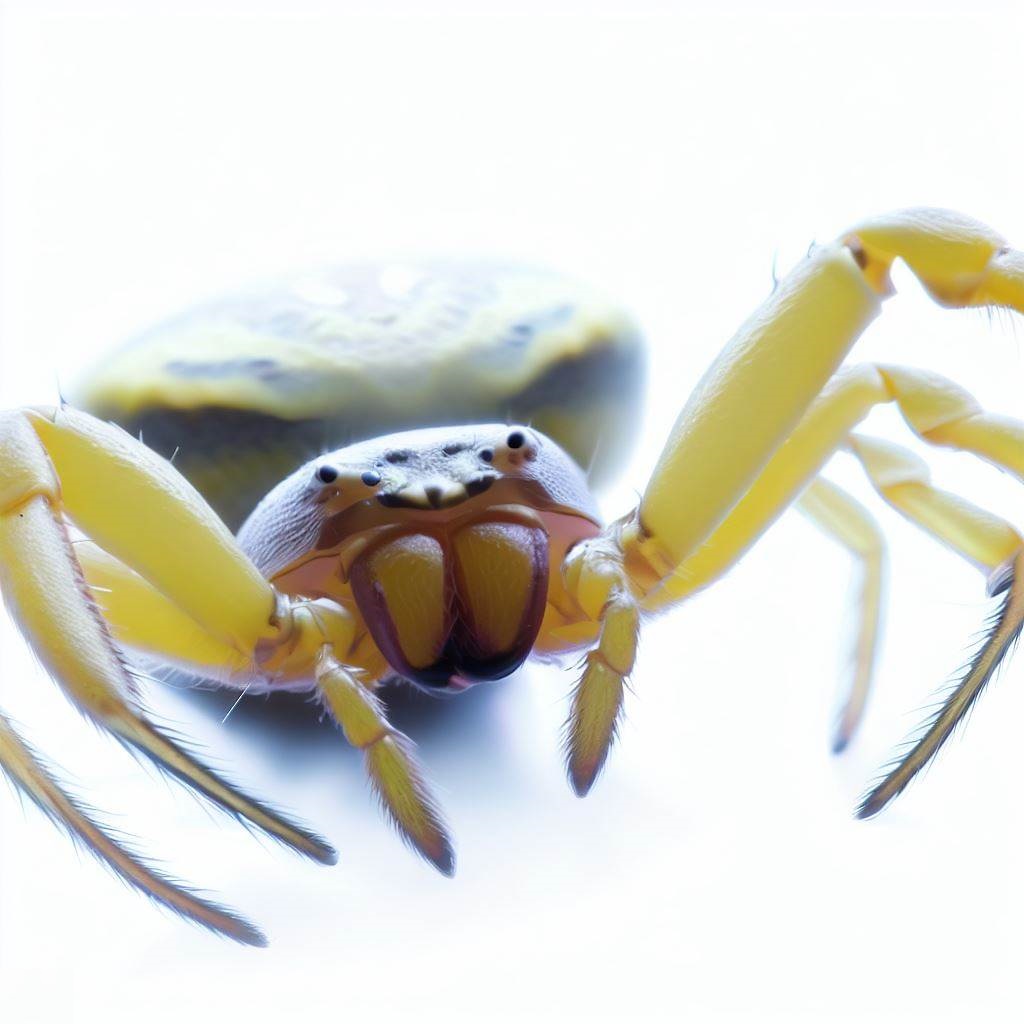
Crab Spiders
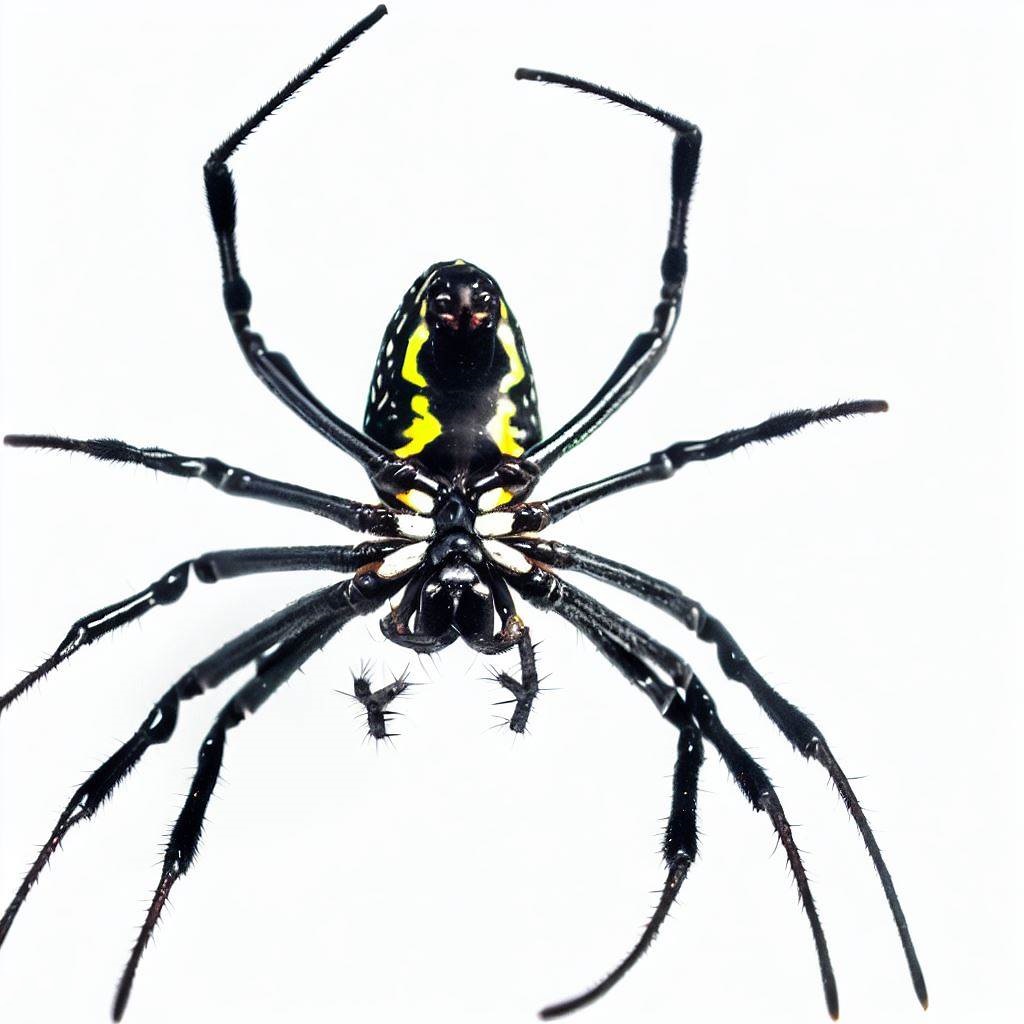
Black and Yellow Garden Spider
Call us for a Free Spiders Inspection
What are the characteristics of Cross Orb-weaver?
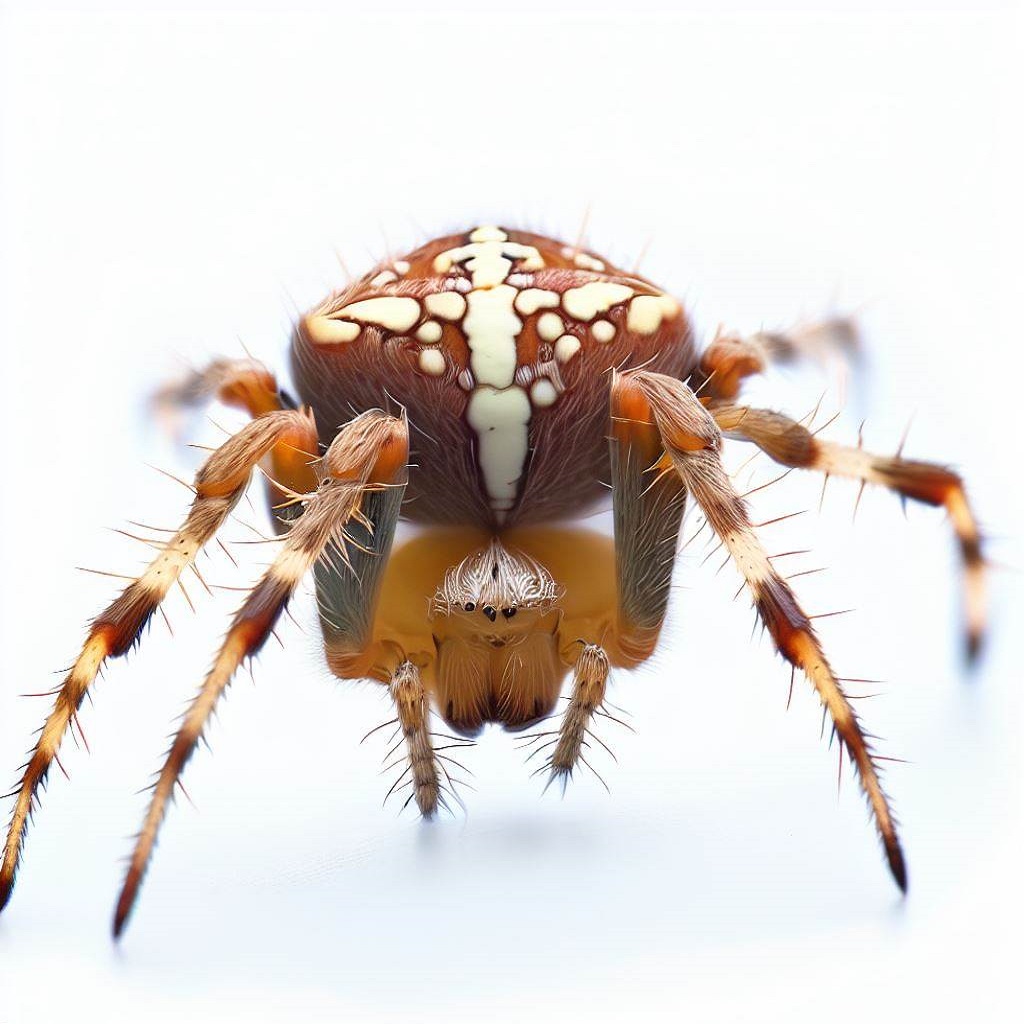
| Characteristics of Cross Orb-Weaver | |
|---|---|
| Feature | Description |
| Size | Adults typically range from 12 to 20 mm in body length. |
| Color | Brown or grayish-brown with a characteristic white cross on the abdomen. |
| Shape | Round and plump body shape typical of orb-weavers. |
| Legs | Eight long, spindly legs with light and dark banding. |
| Web | Builds spiral wheel-shaped webs in gardens, fields, and forests. |
| Habitat | Commonly found in gardens, grassy meadows, and woodlands. |
| Diet | Carnivorous, feeding primarily on flying insects caught in its web. |
What are the characteristics of Barn Funnel Weaver?
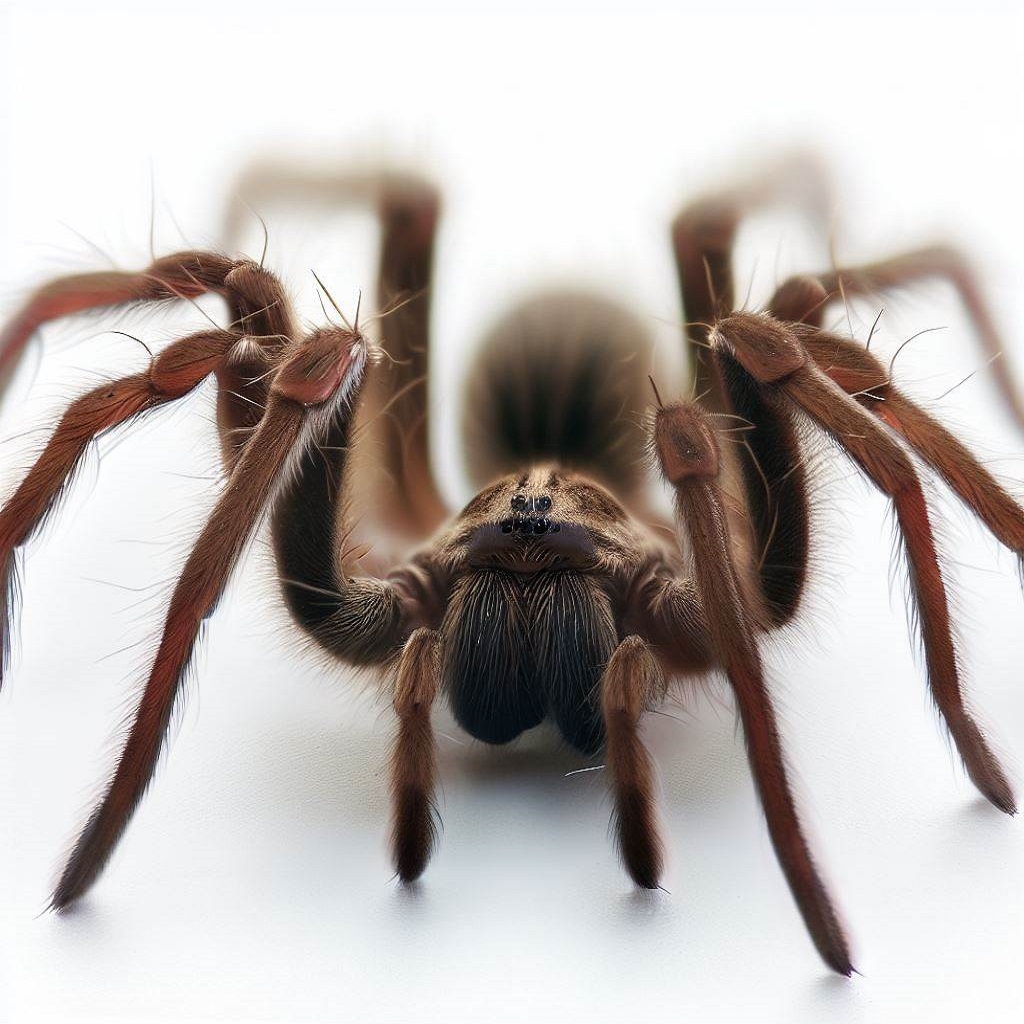
| Characteristics of Barn Funnel Weaver | |
|---|---|
| Feature | Description |
| Size | Adults typically range from 7 to 14 mm in body length. |
| Color | Brown with various patterns, sometimes with a darker stripe running down the center of the abdomen. |
| Shape | Oval body with long legs, typical of funnel weaver spiders. |
| Legs | Eight long legs, often with darker bands or rings. |
| Web | Builds funnel-shaped webs, often in grassy areas, under rocks, or near buildings. |
| Habitat | Commonly found around buildings, fields, and woodlands. |
| Diet | Carnivorous, feeding primarily on small insects that wander into its web. |
What are the characteristics of Common House Spider?
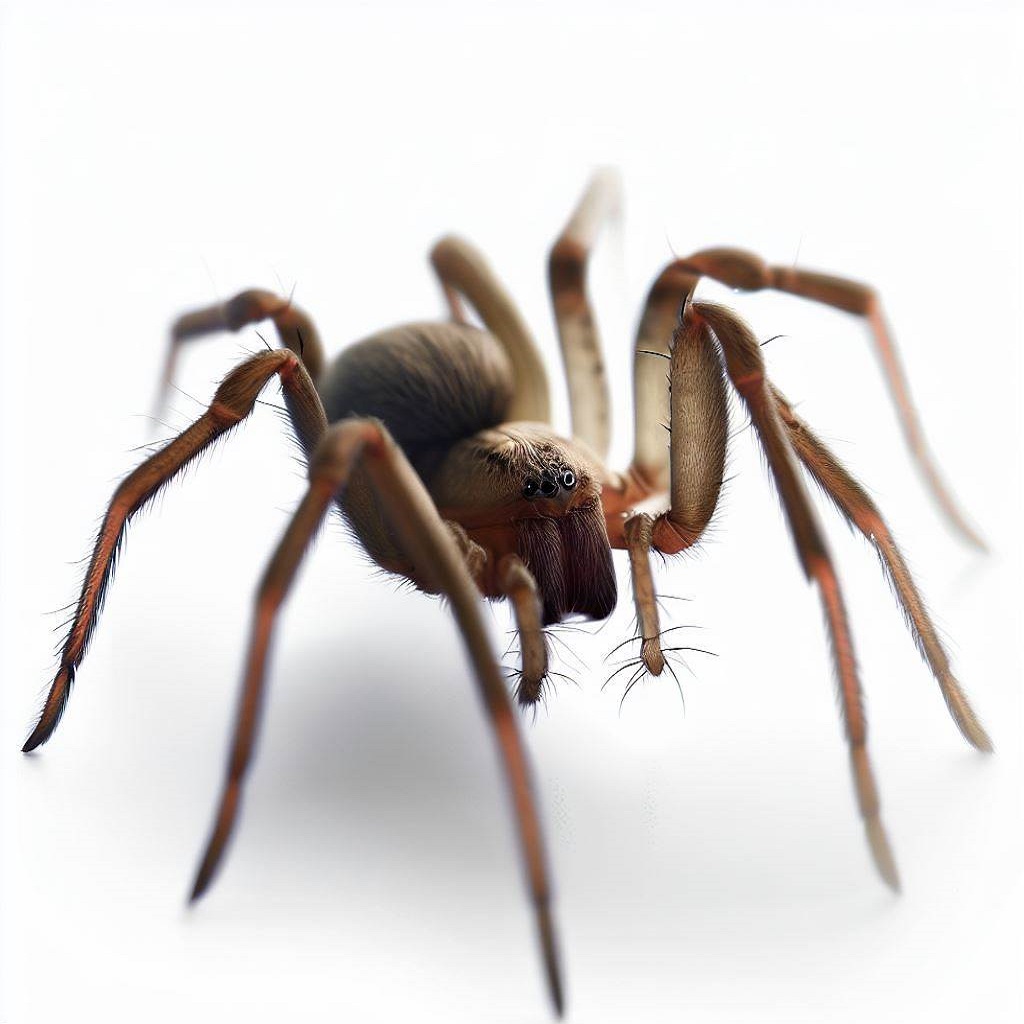
| Characteristics of Common House Spider | |
|---|---|
| Feature | Description |
| Size | Adult females typically range from 5 to 8 mm, while males are slightly smaller, around 4 to 6 mm in length. |
| Color | Brown or tan, often with various mottled patterns on the abdomen. |
| Shape | Oval body with relatively long legs. |
| Legs | Eight legs, often with faint banding or rings. |
| Web | Cobweb or tangle web, usually constructed in corners of rooms, basements, garages, and other undisturbed areas. |
| Habitat | Found in and around homes, often in areas less frequented by humans. |
| Diet | Carnivorous, feeding on small insects and other arthropods that get trapped in its web. |
What are the characteristics of Grass Spiders?
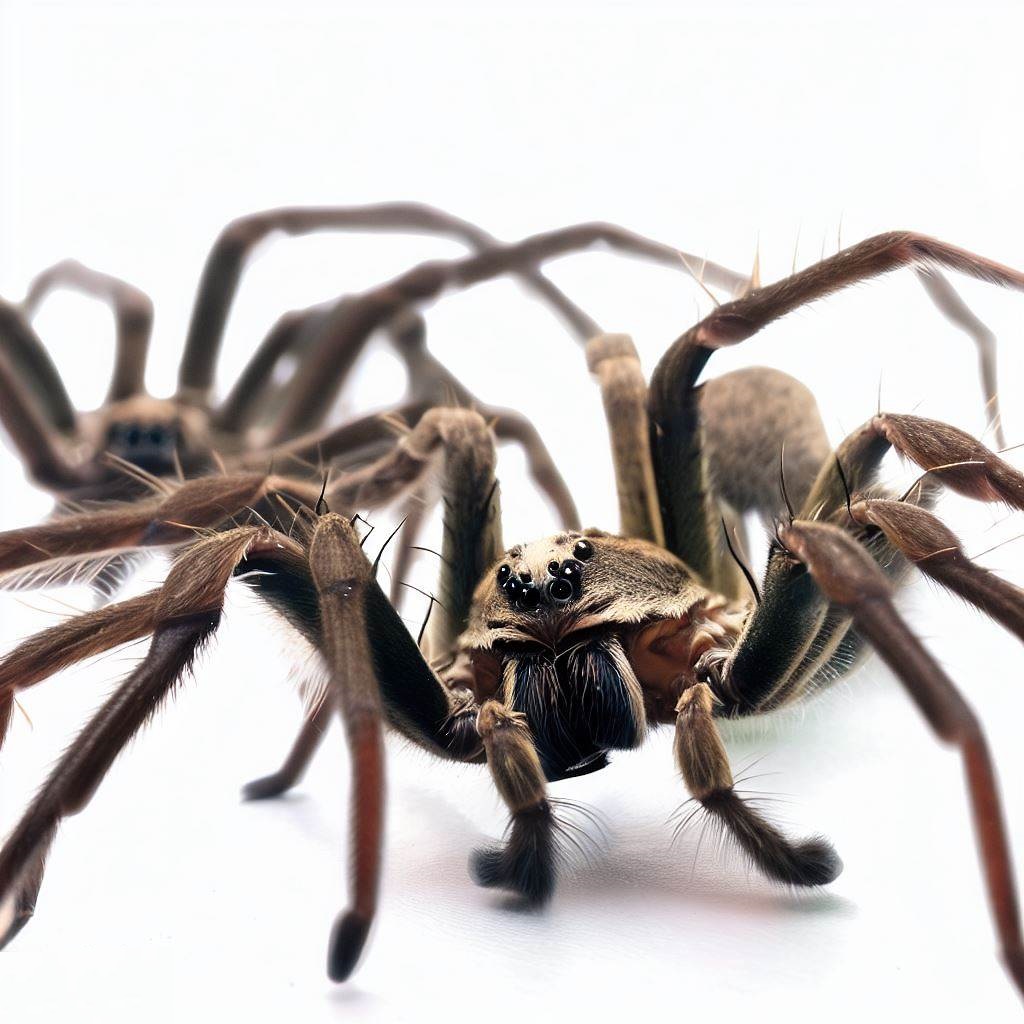
| Characteristics of Common House Spider | |
|---|---|
| Feature | Description |
| Size | Adult females typically range from 5 to 8 mm, while males are slightly smaller, around 4 to 6 mm in length. |
| Color | Brown or tan, often with various mottled patterns on the abdomen. |
| Shape | Oval body with relatively long legs. |
| Legs | Eight legs, often with faint banding or rings. |
| Web | Cobweb or tangle web, usually constructed in corners of rooms, basements, garages, and other undisturbed areas. |
| Habitat | Found in and around homes, often in areas less frequented by humans. |
| Diet | Carnivorous, feeding on small insects and other arthropods that get trapped in its web. |
What are the characteristics of Wolf Spiders?
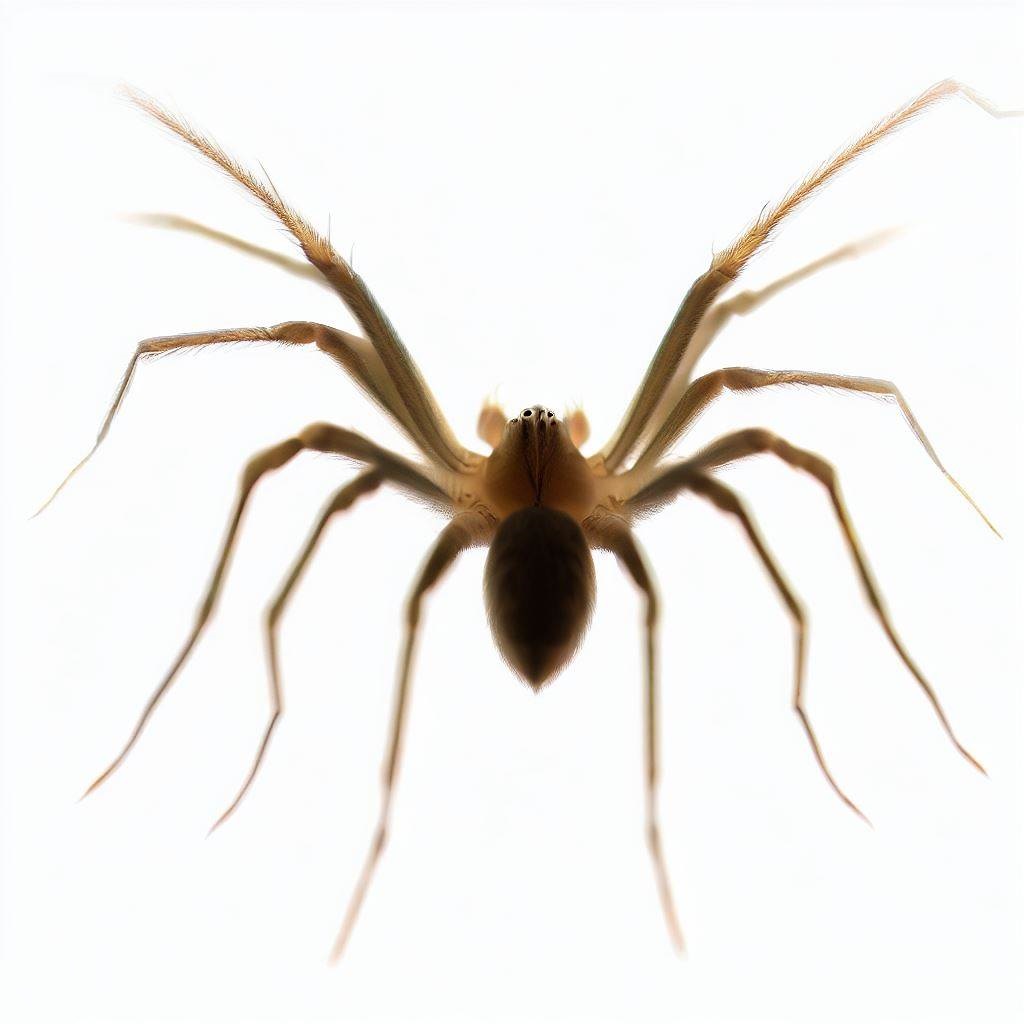
| Characteristics of Wolf Spiders | |
|---|---|
| Feature | Description |
| Size | Adults vary widely, typically ranging from 10 to 35 mm in body length. |
| Color | Brown, gray, black, or tan, often with dark markings or patterns. |
| Shape | Sturdy body with robust legs; some species are hairy, giving a slightly shaggy appearance. |
| Legs | Eight legs, which are long and agile for hunting. |
| Eyes | Eight eyes arranged in three rows; this eye pattern is a distinguishing feature of wolf spiders. |
| Habitat | Various environments, from gardens and grasslands to forests and wetlands. They're ground dwellers and are often seen running on the ground. |
| Diet | Predatory, hunting small insects and other arthropods. They don't build webs to capture prey but actively hunt it. |
| Reproduction | Females carry their egg sacs attached to their spinnerets and, after hatching, young spiders ride on the mother's back for a short period. |
What are the characteristics of Jumping Spiders?

| Characteristics of Jumping Spiders | |
|---|---|
| Feature | Description |
| Size | Most species are small, typically ranging from 3 to 15 mm in body length. |
| Color | Varies widely; can be brown, black, metallic, bright colors, or even iridescent depending on the species. |
| Shape | Compact, stout bodies with short legs compared to other spiders. |
| Legs | Eight legs, but they're known more for their agility in jumping than for long legs. |
| Eyes | Four pairs of eyes, with the anterior median pair being particularly large and giving them good forward vision. |
| Habitat | Found in various habitats from gardens to forests. They're often spotted on walls, plants, fences, and even indoors hunting for prey. |
| Diet | Predatory, feeding on small insects and other spiders. They hunt actively during the day, stalking and then jumping on their prey. |
| Reproduction | Males often have intricate, colorful displays used to attract females. After mating, females lay their eggs in a silk sac. |
What are the characteristics of Fishing Spiders?

| Characteristics of Fishing Spiders | |
|---|---|
| Feature | Description |
| Size | Generally large spiders, with females often reaching 25 mm in body length and males being slightly smaller. |
| Color | Typically brown or gray with darker markings, aiding in camouflage against bark and leaves. |
| Shape | Stout bodies with long legs, especially the first two pairs, which they use to sense vibrations on the water's surface. |
| Legs | Eight legs; they use them to "skate" across water surfaces or dive briefly underwater to capture prey. |
| Eyes | Eight eyes arranged in two rows. The anterior median eyes are large and aid in their hunting activities. |
| Habitat | Often found near freshwater sources like ponds, swamps, and slow-moving streams. They rest on surfaces near or on the water. |
| Diet | Predatory, feeding on aquatic insects, small fish, and even tadpoles. They detect prey by sensing vibrations on the water's surface. |
| Reproduction | Females lay their eggs in a silken sac usually attached to vegetation. Once hatched, she guards the spiderlings until their first molt. |
What are the characteristics of Sac Spiders?
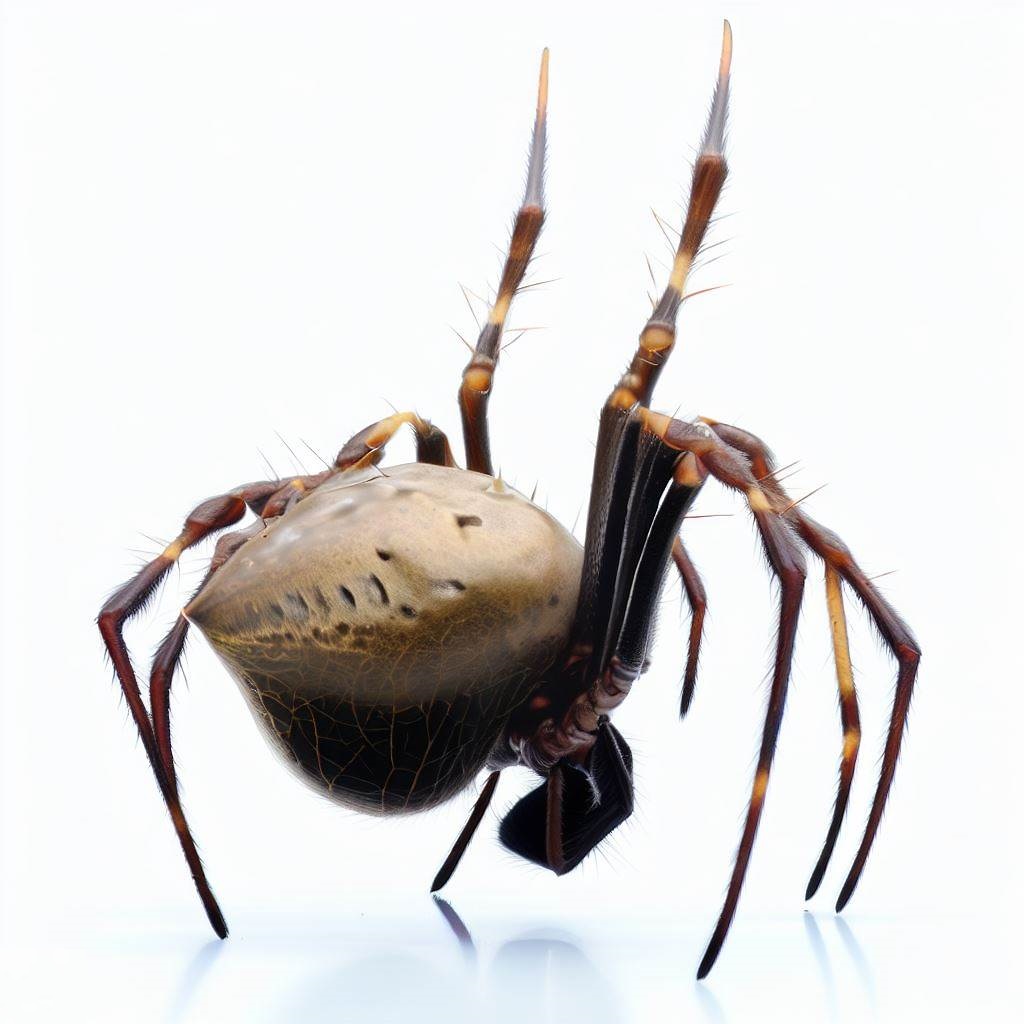
| Characteristics of Sac Spiders | |
|---|---|
| Feature | Description |
| Size | Typically 4 to 10 mm in length, depending on the species. |
| Color | Usually pale in color, ranging from yellow to beige or light brown. |
| Shape | Oval body with long legs relative to their body size. |
| Legs | Eight legs, often with a darker color at the tarsi (end part of the leg). |
| Eyes | Eight eyes, typically arranged in two rows. |
| Habitat | They can be found in a variety of habitats, from forests to grasslands. Indoors, they often reside in ceilings, corners, or behind furniture. |
| Diet | Predatory, feeding mostly on small insects. They hunt at night and do not use webs to capture prey. |
| Reproduction | Females create silk sacs for their eggs and often guard them until they hatch. These sacs are where sac spiders get their name. |
What are the characteristics of Crab Spiders?
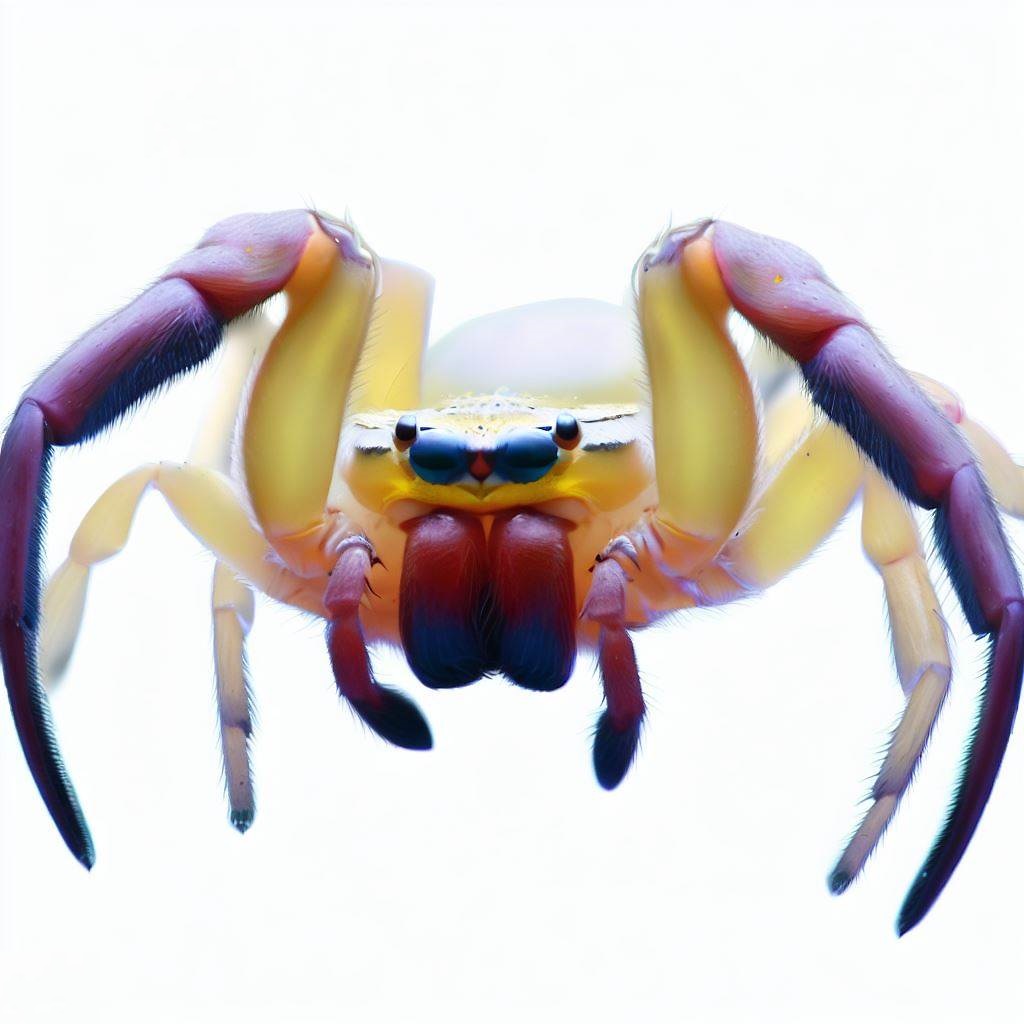
| Characteristics of Crab Spiders | |
|---|---|
| Feature | Description |
| Size | Generally between 2 to 30 mm depending on species and gender. Females are typically larger than males. |
| Color | Varying colors, often adapted to their living environments for camouflage. Many are brightly colored, while others might resemble the flowers they inhabit. |
| Shape | Broad, flat bodies with two front pairs of legs longer and often held out to the side, giving them a crab-like appearance. |
| Legs | Eight legs; the first two pairs are often larger and are used to grasp prey. |
| Eyes | Eight eyes arranged in two rows. They have very good vision. |
| Habitat | Found on flowers, plants, and tree trunks in gardens, meadows, and woodlands. They do not spin webs but instead ambush their prey. |
| Diet | Ambush predators that feed on insects, often capturing prey larger than themselves. Some species are known to prey on bees and butterflies. |
| Reproduction | Females lay eggs in silken sacs and guard them. Some females will carry their egg sacs with their jaws and fangs. |
What are the characteristics of Black and Yellow Garden Spider?
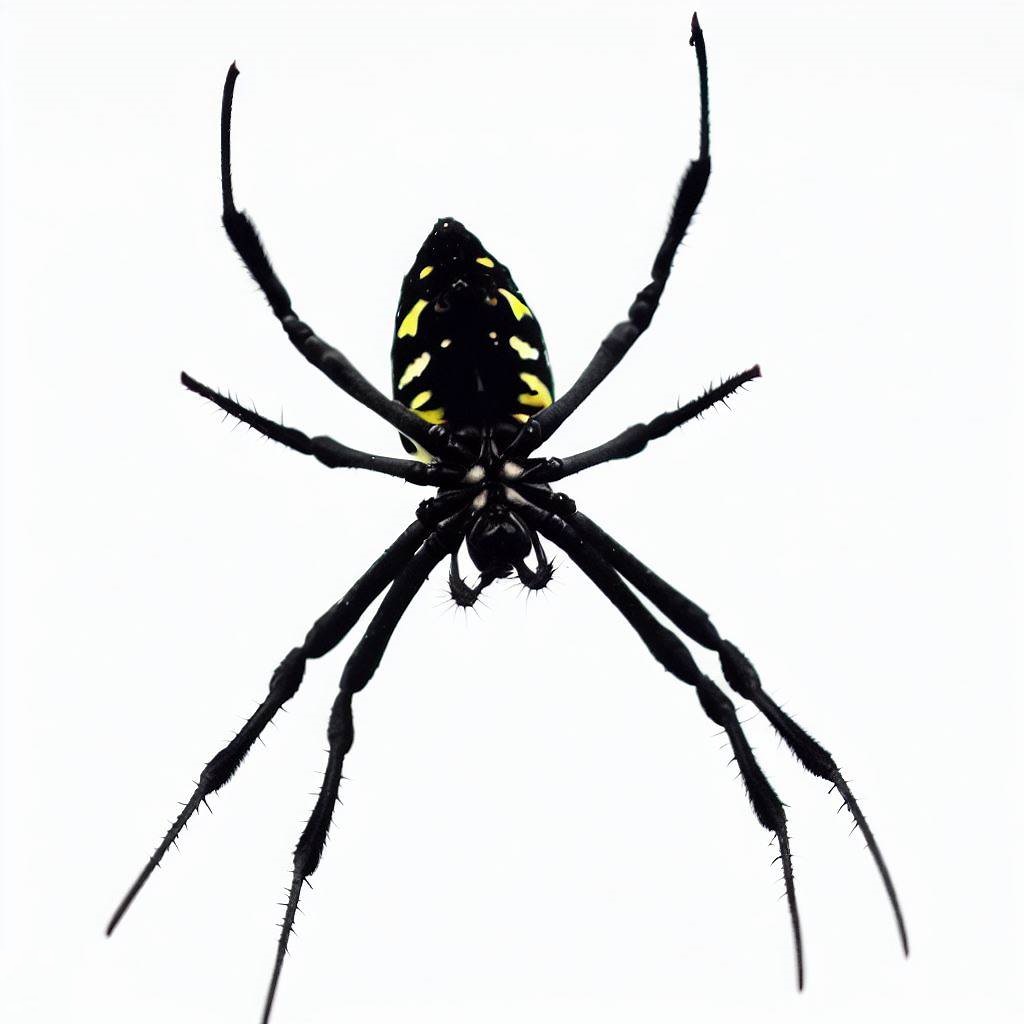
| Characteristics of Black and Yellow Garden Spider | |
|---|---|
| Feature | Description |
| Size | Females are larger, typically measuring 19-28 mm in body length, while males are about 5-9 mm. |
| Color | Distinctive black and yellow markings. The abdomen is mostly black with symmetrical patches of bright yellow. |
| Shape | Orb-shaped abdomen, which is larger in females. These spiders are part of the orb-weaver family, known for their spiral wheel-shaped webs. |
| Legs | Eight legs, which are often black with yellow or orange bands. |
| Eyes | Eight eyes arranged in two rows. |
| Habitat | Often found in gardens, orchards, and sunny areas with shrubs and tall plants. They create large orb-shaped webs to catch flying insects. |
| Diet | They feed on flying insects that get caught in their webs. This includes mosquitos, flies, and occasionally larger insects like butterflies. |
| Reproduction | Females produce a sac of hundreds of eggs, which they guard. These sacs are often seen on plants or buildings in late summer or fall. |
Call us for a Free spider Inspection
Top Tips To Prevent Spiders Infestations: Essential Guide
1. Reduce Clutter:
Spiders love hiding in dark, undisturbed places. By reducing clutter both inside and outside your home, you minimize the hiding spots available to them.
Clean and declutter storage areas regularly. Avoid letting items pile up, especially in basements, attics, and garages.
2. Seal Entry Points:
Check for gaps and cracks in windows, doors, and the foundation of your home.
Use caulk to seal any gaps that might allow spiders to enter. Ensure door sweeps are properly installed and that window screens don’t have holes.
3. Regular Cleaning:
Regularly vacuum and dust your home. This not only cleans away spiders but also removes webs and egg sacs.
Pay special attention to corners, ceilings, and behind furniture where webs can easily form.
4. Maintain Your Yard:
Trim bushes, trees, and plants so they don’t directly touch your home. Spiders can use these as bridges to access your property.
Avoid having woodpiles, compost heaps, and garden debris close to your home’s foundation. These are attractive hiding places for spiders.
5. Control Other Pests:
Pests like flies, ants, and other small insects can attract spiders since they serve as their food source.
By controlling and eliminating these pests, you make your home less appealing for spiders.
Frequently Asked Questions about Spiders
While most spiders have venom glands, not all are harmful to humans. Only a small percentage of spider species pose any danger to people.
Spider bites can vary in appearance, but they often look like any other bug bite: a red, swollen, sometimes itchy or painful bump on the skin. Some spider bites might have two puncture marks.
Spiders generally come inside in search of food or shelter. They’re attracted to areas with plentiful insect prey and often seek refuge from extreme weather conditions.
